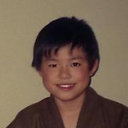[A Case of Rocuronium-induced Anaphylaxis in Which Surgery was Subsequently Performed under General Anesthesia without Neuromuscular Blocking Agents].
Palavras-chave
Resumo
We report here a case of rocuronium-induced anaphylactic shock in a 41-year-old woman. She was scheduled for partial hepatectomy due to liver metastasis of a pheochromocytoma. Anesthesia was induced with propofol, remifentanil, and rocuronium. Bag-mask ventilation was difficult, and her blood pressure fell to around 40 mmHg just after induction. Subsequently, her trachea was intubated and adrenaline was injected. However, due to the subsequent persistence of severe hypotension and hypoxia, cardiopulmonary resuscitation was necessary. Suspecting the development of pulmonary embolism or anaphylaxis, we performed transesophageal echography; however, no evidence of right heart dilatation was observed, indicating a low possibility of pulmonary embolism. Although her general condition was stabilized, surgery was canceled. Blood tests showed high serum histamine and tryptase levels, suggesting an Ig-E mediated allergic reaction. A skin test performed five weeks after anesthesia suggested that she had suffered from rocuronium-induced anaphylaxis. A skin test also showed cross-reactivity between rocuronium and vecuronium. Therefore, we did not use any neuromuscular agent for the subsequent surgery, which was completed uneventfully. Determining the drug responsible for anaphylaxis helps to prevent recurrence of anaphylaxis.


